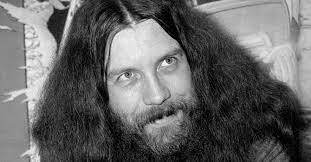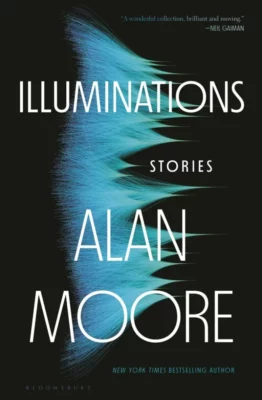Reading Alan Moore’s Thunderman by Alex Grand
Read Alex Grand’s Understanding Superhero Comic Books published by McFarland Books in 2023 with Foreword by Jim Steranko with positive reviews by comic book professionals, Jim Shooter, Tom Palmer, Tom DeFalco, Danny Fingeroth, Alex Segura, Carl Potts, Guy Dorian Sr. and more.
In the meantime enjoy the show:
Alan Moore encountered a disappointing experience with the comic book industry, as did Siegel, Shuster, Kirby, Ditko and others; [Spoiler Alert] so he compares continuing comic book creators and their fans to drug addicts in “What We Can Know About Thunderman,” a novella in his anthology book Illuminations (2022). The story functions as Moore’s impression of the dysfunctional history of superhero comics and provides his perception of how to understand it using fictionalized names that substitute for their real or mostly real analogues.

I enjoyed it, mainly to find out how he feels about the events that I know about and to read his suggestions of how Marvel and DC became successful through secret deals with greater powers. However many have called it mean-hearted and that’s probably true mainly because he has no love for the corporate-run comic book industry. That being said, it became fun to identify who the real life counterparts to Moore’s creators, fictional superheroes and companies (within 51 or more %) were so I came up with this probable list. He also substituted real people for other real people. If anyone thinks i got something wrong let me know. There were some I couldn’t figure out, and either they weren’t meant to be a person or I didn’t put it together. I put a question mark if I’m connecting it with uncertainty.

As he developed the story with David Gibbons, he began to realize that he could push the boundaries of the comics medium as a serious storytelling device that can relay complex ideas and emotions, which he explains in 1989.
However, in 1991, he explains what he intended for the superhero genre with Watchmen versus what he ended up getting in this 1991 interview from Prisoners of Gravity.
He became disappointed with the fandom surrounding the post-1986 “postmodern” superhero comic book movement that resulted from his unintentional revitalization of the genre, which he explained again in 1997.
Alan Moore’s journey in the comic book industry, as depicted in his anthology Illuminations (2022) and interviews, illuminates the often painful tension between creative vision and commercial exploitation. His evolution from an enthusiastic creator keen on portraying superheroes realistically to a disappointed critic of the industry’s corporatization offers a poignant narrative of the trials faced by artists in mainstream success. His critique, while viewed by some as mean-spirited, raises essential questions about the comic book industry’s practices, its treatment of creators, and the unintended consequences of its rampant commercialization. Moore’s experience serves as a crucial reminder that industries like comics need to continually reassess their relationship with creators, to ensure the fostering of innovation and respect for artistic integrity, underpinning the necessity of his critique as a wake-up call to the industry.
Much of that disappointment is expanded upon in Thunderman, which a lot of readers would miss without knowing what exactly he’s referring to. Unfortunately, there are some fanatical Alan Moore fans who prefer to repeatedly reread his and Frank Miller’s comics ad nauseum while ignoring older works, and fall into the trap of preferring not to know who exactly he is talking about because they would rather ride along the artistic fairy tale that is presented in this novella. It is that hopeless adherence to the fantasy of a presentation which Moore is criticizing, because there also comes a blindness to the reality that inspired it in the first place. For example, how many Spider-Man fans are there that haven’t heard of Steve Ditko, the hero’s visual creator and conceptual co-creator? Or the phenomenon of what Moore observed in his novella, how fans consumed comic books more vigorously when the older generation of writers and artists who tried to start a union at DC for better pay and healthcare got replaced by younger talent who were superhero fans that settled for the status quo quality of living. Not identifying, at least mostly who is being referred to is a mistake because we can use that information to extrapolate what Moore is identifying and how he specifically feels about it. This enhances ones understanding of comic book history, and gives us an idea of what Moore has taken away from his study and experiences of it. That to me is the greater point to Thunderman, rather than enjoying another cone full of sweetness.
Join us for more discussion at our Facebook group
check out our CBH documentary videos on our CBH Youtube Channel
get some historic comic book shirts, pillows, etc at CBH Merchandise
check out our CBH Podcast available on Apple Podcasts, Google PlayerFM and Stitcher.
Use of images are not intended to infringe on copyright, but merely used for academic purpose.
Images used ©Their Respective Copyright Holders











